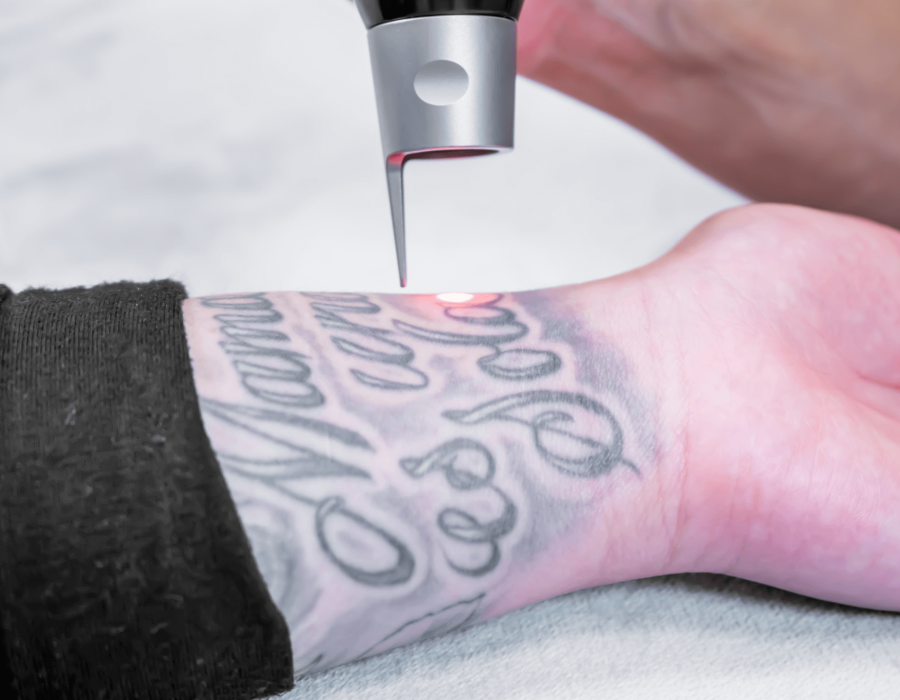Tattoos have become a popular form of self-expression, but for various reasons, many people find themselves wanting to remove their ink. Whether it’s due to changing life circumstances, a desire for a fresh start, or simply a shift in personal taste, laser tattoo removal has emerged as one of the most effective methods for erasing unwanted tattoos. However, achieving success with this procedure requires understanding the process and taking the right steps to prepare.
Understanding the Laser Tattoo Removal Process
Laser Tattoo Removal in Dubai works by targeting the ink particles in the skin with high-intensity light beams. These lasers break down the ink into smaller particles, which the body can then naturally eliminate over time. The effectiveness of the procedure depends on several factors, including the type of ink used, the tattoo's age, the location on the body, and the individual’s skin type.
During the process, a technician will apply a topical anesthetic to minimize discomfort. The laser is then directed at the tattoo, with each session lasting anywhere from a few minutes to an hour, depending on the size and complexity of the tattoo. Multiple sessions are typically required to achieve the desired results, as the body needs time to heal and eliminate the fragmented ink.
Choosing the Right Clinic
Selecting a qualified clinic for your laser tattoo removal is crucial for ensuring a successful outcome. Start by researching clinics in your area, focusing on those that specialize in tattoo removal. Look for reviews and testimonials from previous clients to gauge the clinic’s reputation and effectiveness.
When you find a potential clinic, schedule a consultation. During this visit, ask about the technology they use, the qualifications of the staff, and their experience with your specific tattoo type. A reputable clinic will be transparent about their methods and will provide a personalized treatment plan tailored to your needs.
Preparing for Your Sessions
Preparation is key to enhancing the effectiveness of laser tattoo removal. Here are some steps to take before your first session:
- Avoid Sun Exposure: Excessive sun exposure can make your skin more sensitive and can affect the laser treatment. Protect the area of the tattoo from the sun by wearing clothing or using a high-SPF sunscreen.
- Stay Hydrated: Drinking plenty of water before your appointment can help keep your skin hydrated and make the procedure more comfortable.
- Avoid Blood Thinners: Certain medications and substances can thin your blood, increasing the risk of bruising during the procedure. Avoid alcohol, aspirin, and other blood thinners for at least 24 hours prior to your session.
- Consult Your Doctor: If you have any underlying health conditions or are taking medications, consult with your doctor before undergoing laser tattoo removal. They can provide advice on any potential complications.
What to Expect After Each Session
Post-treatment care is essential for successful healing and ink removal. After your session, you may experience some redness, swelling, and blistering, which are normal responses to the laser. Follow these guidelines for optimal recovery:
- Keep the Area Clean: Gently clean the treated area with mild soap and water to prevent infection.
- Apply Ointment: Use a recommended ointment to keep the area moisturized and promote healing.
- Avoid Picking or Scratching: Allow any scabs or blisters to heal naturally. Picking can lead to scarring or infection.
- Monitor for Complications: Watch for signs of infection, such as excessive redness, pus, or increasing pain. If you experience these symptoms, contact your clinic for advice.
- Follow-Up Sessions: Be sure to attend follow-up appointments as scheduled. The number of sessions required will vary based on the individual tattoo and your skin's response to treatment.
Maintaining Realistic Expectations
While laser tattoo removal is effective, it’s important to maintain realistic expectations about the outcome. Complete removal of the tattoo may not always be possible, especially for certain ink colors or older tattoos. Some individuals may experience lightening of the tattoo rather than complete removal.
Additionally, skin type and healing response play significant roles in how well the ink is removed. It’s essential to have an open discussion with your technician about your goals and any concerns you may have. A knowledgeable professional will help set realistic expectations and guide you through the process.
Conclusion
Laser tattoo removal can provide a path to reclaiming your skin and moving forward without the burden of unwanted ink. By understanding the process, choosing the right clinic, preparing adequately, and maintaining realistic expectations, you can enhance your chances of success. Remember that patience and care are key, as achieving the desired results may take time and multiple sessions. With the right approach, you can successfully navigate the journey of laser tattoo removal and embrace a new chapter in your life.






Comments